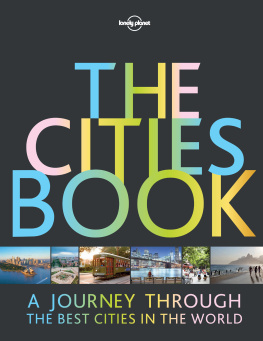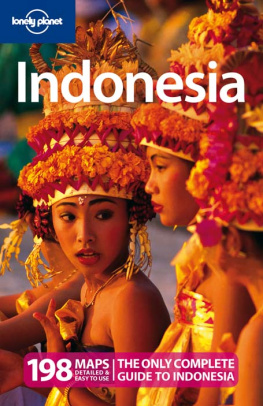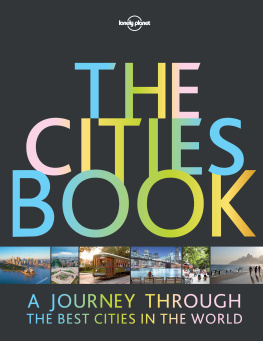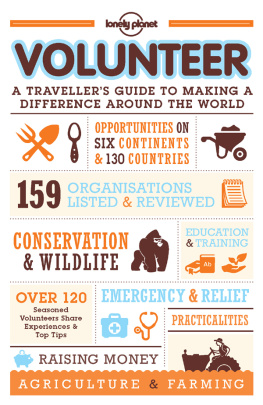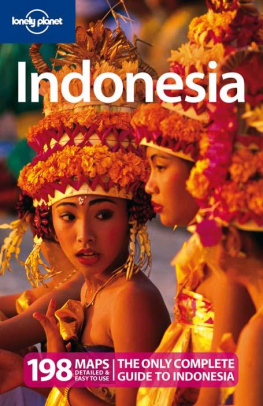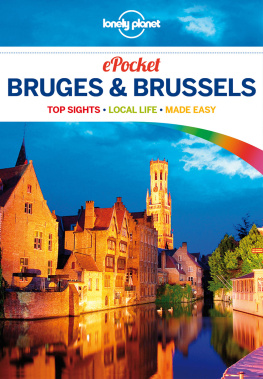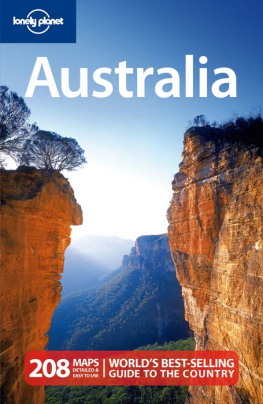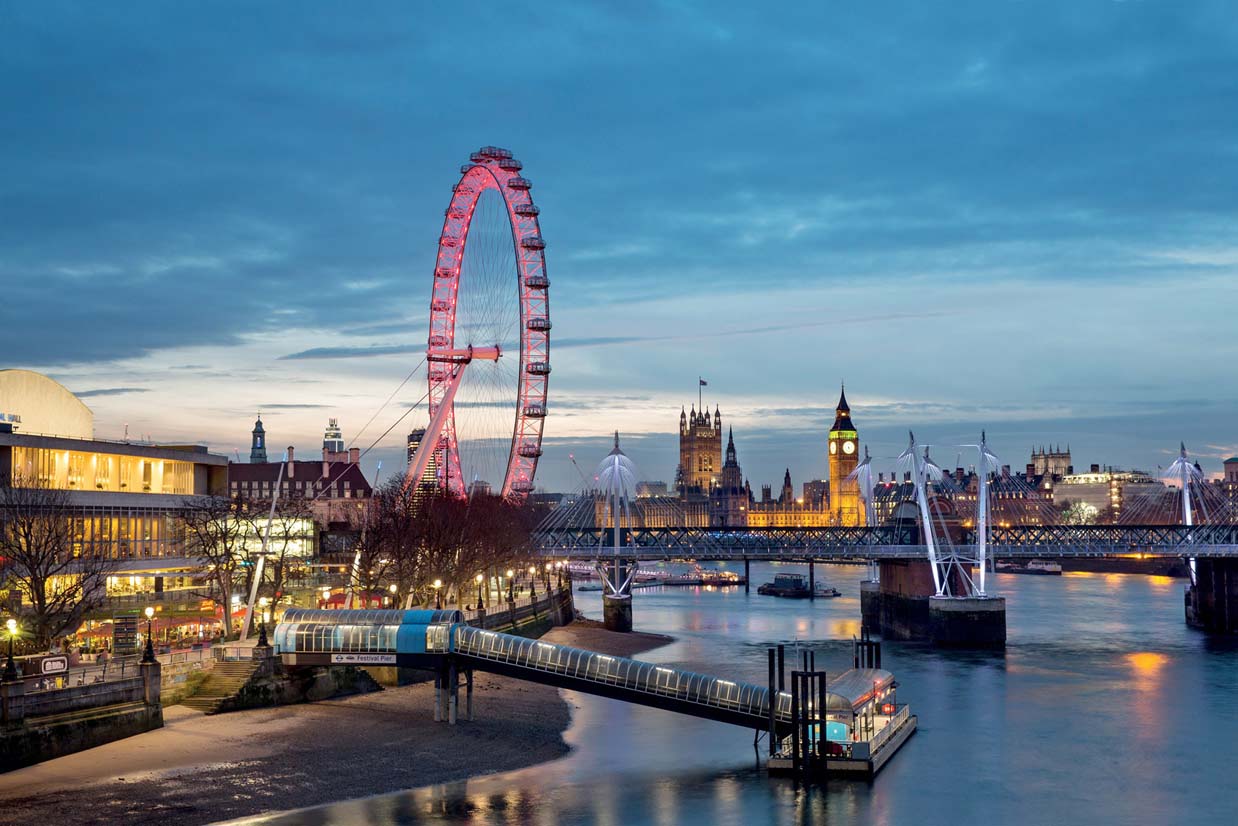Night falls on the Thames and such iconic city sights as the London Eye and Houses of Parliament / TONY C FRENCH | GETTY IMAGES
Intro
When you look at a city, its like reading the hopes, aspirations and pride of everyone who built it. Hugh Newell Jacobsen
The Cities Book is a celebration. Of the physical form, in stone, glass, metal and wood, that is taken by these remarkable spiritual, cultural, political and technological bastions. Of the people whose energy spills out into the city, transforming itself into music, art and culture. Of the myriad sights, smells, sounds and other temptations they offer. By celebrating the majesty of cities on every continent, we marvel at the contribution they have made to the collective richness of humankind over more than six millennia.
We begin with a look at the evolution of cities their roots in the first civilisations, the characteristics we associate with the great cities of today, and the possible directions they will take in the future. According to the UN, just over half the worlds population was urban in 2014, compared with one-third in 1950. By 2050, city dwellers are predicted to comprise two-thirds of the populace. Our urban ancestors could not possibly have predicted the way in which cities would change the world we live in.
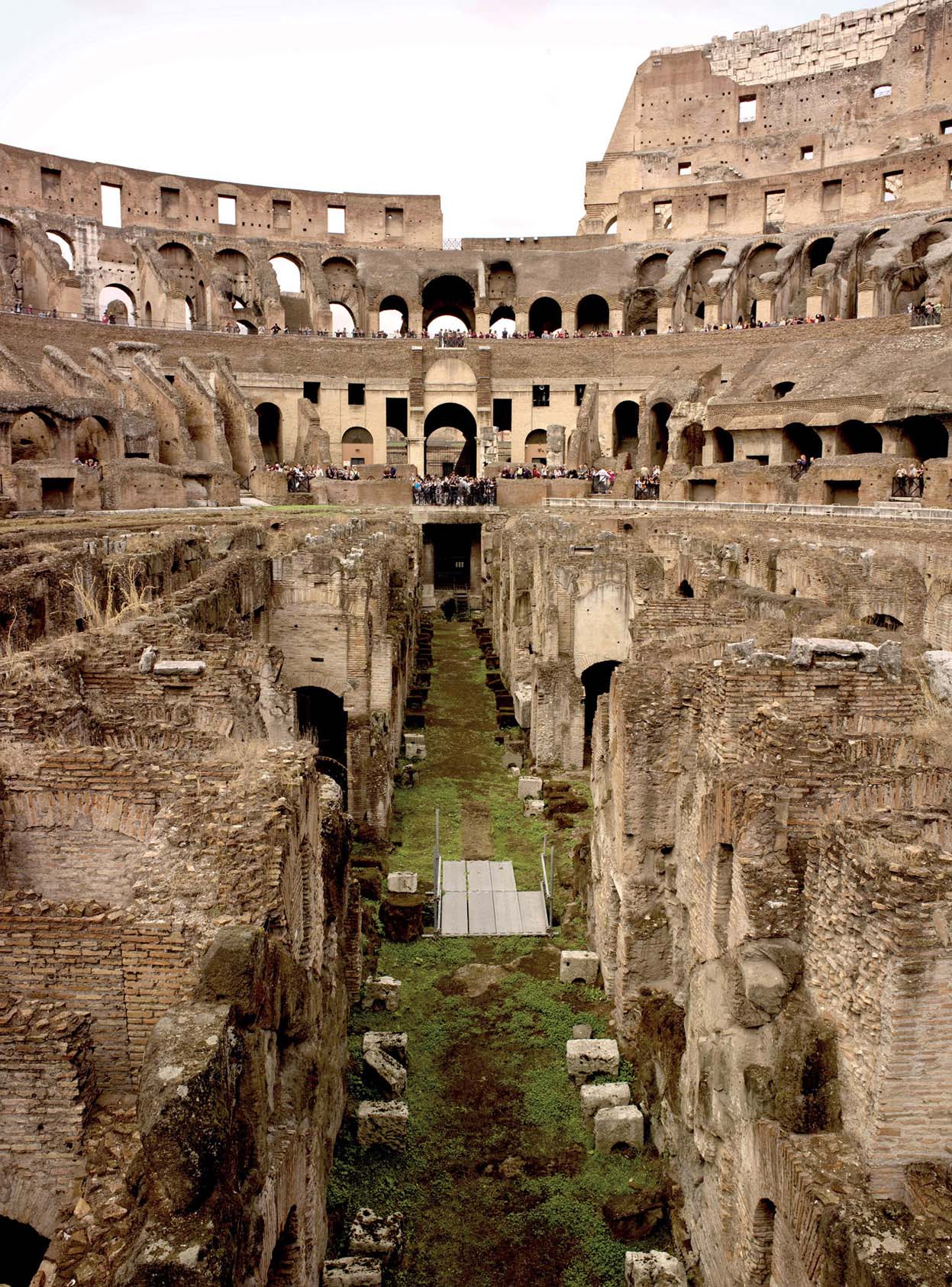
The Colosseum is a compelling reminder of the power of Ancient Rome / LOTTIE DAVIES | LONELY PLANET
Past
The story of how cities evolved is the story of civilisation. We can glimpse the past in the preserved walls of castles, palaces and places of worship that have survived, albeit haphazardly, for centuries, and which influence the colour and flavour of our present. Cuzco in Peru is one example. The citys strongest walls remain those constructed by the Inca, whose stone monoliths were carved by hand and laid so precisely, without mortar, that it is impossible to slide paper between them. These mighty stones continue to make up the streets and foundations of newer buildings to this day.
Paradoxically, with the advent of sedentary settlements, where people resided in large groups instead of roaming the countryside as small bands of hunter-gatherers, came the advent of inter-city travel. Initially people travelled (as they still do) for trade, war or religious pilgrimages, but eventually cities gave birth to the leisured classes who could travel for curiosity and pleasure. Even in ancient times there were hoteliers.
Sumerian cities
Current archaeological records indicate that the oldest cities are those found along the banks of the Tigris and Euphrates Rivers in Mesopotamia, modern Iraq. The great Sumerian capital of Uruk grew around fertile shores lined with irrigation ditches dug centuries before. These ditches, filled with water from the Euphrates River, allowed the Sumerians to farm the land, producing surpluses of food for the construction workers, possibly slaves, to raise the worlds first cities. The most ancient of these was Uruk, famous for its giant defensive walls, luscious gardens and sophistication of its ruling elite, including the god-king Gilgamesh, who was the subject of the worlds oldest epic, the Song of Gilgamesh, still in print today.
Excavation of the site where the city once stood, an area covering 450 hectares, has yielded astonishing finds, such as a cuneiform tablet containing what is regarded as the most accurate description of the Tower of Babel, an architectural feat referenced in the Bible. After more than 5000 years, the legacy of Sumerian culture has remained potent. Not only did they invent the wheel and the first written language (Sumerian cuneiform script emerged around 3500 BC), but also the sexagesimal number system, still used to measure time.
Rome antiquitys great melting pot
Sicilian writer Vincenzo Salerno said that the blueprint for Western civilisation was the society of ancient Rome. The Romans gave us our alphabet (minus u and w), and many of the words we still use are derived from ancient Latin. They gave us the 12-month lunar calendar; the rudiments of classical architecture; straight roads; a system of government; literature; public-ablution facilities; and endless subject matter for Shakespearean plays and even movies. At the heart of the mighty empire was the imperial capital, home of the Senate and generations of megalomaniac emperors. Ancient Romes former glory is still visible in the modern city, notably the remains of the Forum, Pantheon and Colosseum.
The Romans were not the first people to become civilised, though, and nor did they develop in a vacuum. They were great assimilators of the skills, knowledge, literary conventions and even deities from neighbouring or past civilisations a process hastened through conquest in particular the Greek and Egyptian civilisations, centred on Athens and Alexandria, which were already melting pots of ideas, racial groups and culture.
Alexandria the Great
In 332 BC, Alexander the Great thrashed the Persians and conquered Egypt for the Greeks. The following year, after being crowned pharaoh, he ordered the construction of a fortified port which he named, in a moment of egotism, Alexandria. The city was to replace Memphis as the capital of ancient Egypt and, had Alexander not died of fever during the conquest of Babylon, would have become the capital of his enormous empire.
During antiquity the Egyptian capital was famous for its wonderful papyrus and great medicines, perfume, jewellery and gold work. The city was, and still is, legendary for the Pharos Lighthouse, one of the Seven Wonders of the Ancient World, and for its library, established under Ptolemy III. Less than 500 years after Ptolemy Soter ascended the throne, Alexandria was reduced to rubble, destroyed through a combination of Caesars aggression, petty-minded Christian rebels, earthquake and flood. The Egyptian city we know today as Alexandria bears almost no trace of its amazing history. But through the advanced system of trade and communications that existed, some of the knowledge contained in the library survived. Then as now, the great powers adopted and adapted the successful tricks and strategies of their contemporaries, ensuring that the legacies of civilisations dating back millennia would be recorded.
Lost cities Atlantis to Great Zimbabwe
For thousands of years, fabled lost cities have gripped our imagination. Even Plato (427347 BC) pondered how advanced civilisations could just be mysteriously wiped out. The source of the legend of Atlantis stems from his account: In this island of Atlantis was a great, wonderful empire which had ruled over the island and several others, and over parts of the continent But there occurred violent earthquakes and floods, and in a single day and night of misfortune the island of Atlantis disappeared in the depths of the sea.
There are still people out there trying to find this ancient utopia, and over the years a spate of potential Atlantises have been found in waters across the world. The jury is still out on this legendary citys existence, but strange structures discovered in Japanese waters off Yonaguni do appear to be man-made. Though not enough to signify the existence of a whole city, the stone ruins estimated age, circa 10,000 years, represents another conundrum for those tracking the chronology of ancient human civilisation.

